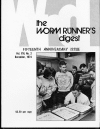Heroes of the Engram
- PMID: 28469009
- PMCID: PMC6596490
- DOI: 10.1523/JNEUROSCI.0056-17.2017
Heroes of the Engram
Abstract
In 1904, Richard Semon introduced the term "engram" to describe the neural substrate responsible for (or at least important in) storing and recalling memories (i.e., a memory trace). The recent introduction of a vast array of powerful new tools to probe and manipulate memory function at the cell and neuronal circuit level has spurred an explosion of interest in studying the engram. However, the present "engram renaissance" was not borne in isolation but rather builds on a long tradition of memory research. We believe it is important to acknowledge the debts our current generation of scientists owes to those scientists who have offered key ideas, persevered through failed experiments and made important discoveries before us. Examining the past can also offer a fresh perspective on the present state and future promise of the field. Given the large amount of empirical advances made in recent years, it seems particularly timely to look back and review the scientists who introduced the seminal terminology, concepts, methodological approaches, and initial data pertaining to engrams. Rather than simply list their many accomplishments, here we color in some details of the lives and milestone contributions of our seven personal heroes of the engram (Richard Semon, Karl Lashley, Donald Hebb, Wilder Penfield, Brenda Milner, James McConnell, and Richard Thompson). In reviewing their historic role, we also illustrate how their work remains relevant to today's studies.
Copyright © 2017 the authors 0270-6474/17/374647-11$15.00/0.
Figures


Similar articles
-
Memory engrams: Recalling the past and imagining the future.Science. 2020 Jan 3;367(6473):eaaw4325. doi: 10.1126/science.aaw4325. Science. 2020. PMID: 31896692 Free PMC article. Review.
-
Memory Engram Cells Have Come of Age.Neuron. 2015 Sep 2;87(5):918-31. doi: 10.1016/j.neuron.2015.08.002. Neuron. 2015. PMID: 26335640 Review.
-
Memory engram storage and retrieval.Curr Opin Neurobiol. 2015 Dec;35:101-9. doi: 10.1016/j.conb.2015.07.009. Epub 2015 Aug 14. Curr Opin Neurobiol. 2015. PMID: 26280931 Review.
-
Intrinsic Neural Excitability Biases Allocation and Overlap of Memory Engrams.J Neurosci. 2024 May 22;44(21):e0846232024. doi: 10.1523/JNEUROSCI.0846-23.2024. J Neurosci. 2024. PMID: 38561228 Free PMC article.
-
Locating the engram: Should we look for plastic synapses or information-storing molecules?Neurobiol Learn Mem. 2020 Mar;169:107164. doi: 10.1016/j.nlm.2020.107164. Epub 2020 Jan 13. Neurobiol Learn Mem. 2020. PMID: 31945459 Review.
Cited by
-
A time-dependent role for the transcription factor CREB in neuronal allocation to an engram underlying a fear memory revealed using a novel in vivo optogenetic tool to modulate CREB function.Neuropsychopharmacology. 2020 May;45(6):916-924. doi: 10.1038/s41386-019-0588-0. Epub 2019 Dec 14. Neuropsychopharmacology. 2020. PMID: 31837649 Free PMC article.
-
Memory Allocation: Mechanisms and Function.Annu Rev Neurosci. 2018 Jul 8;41:389-413. doi: 10.1146/annurev-neuro-080317-061956. Epub 2018 Apr 25. Annu Rev Neurosci. 2018. PMID: 29709212 Free PMC article. Review.
-
Astrocyte regulation of synaptic signaling in psychiatric disorders.Neuropsychopharmacology. 2023 Jan;48(1):21-36. doi: 10.1038/s41386-022-01338-w. Epub 2022 May 16. Neuropsychopharmacology. 2023. PMID: 35577914 Free PMC article. Review.
-
Memory circuits in dementia: The engram, hippocampal neurogenesis and Alzheimer's disease.Prog Neurobiol. 2024 May;236:102601. doi: 10.1016/j.pneurobio.2024.102601. Epub 2024 Apr 1. Prog Neurobiol. 2024. PMID: 38570083 Free PMC article. Review.
-
A neurally constrained computational model of context-dependent fear extinction recall and relapse.Commun Biol. 2025 Apr 26;8(1):668. doi: 10.1038/s42003-025-08107-7. Commun Biol. 2025. PMID: 40287569 Free PMC article.
References
-
- Bartlett FC. (1960) Karl Spencer Lashley, 1890–1958. Biographical Memoirs of Fellows of the Royal Society 5:107–118. 10.1098/rsbm.1960.0010 - DOI
-
- Beach FA. (1961) Karl Spencer Lashley. Washington, DC: National Academy of Sciences.
-
- Beolens B, Watkins M, Grayson M (2011) The eponym dictionary of reptiles. Baltimore: Johns Hopkins UP.
Publication types
MeSH terms
Grants and funding
LinkOut - more resources
Full Text Sources
Other Literature Sources
Medical
Miscellaneous
